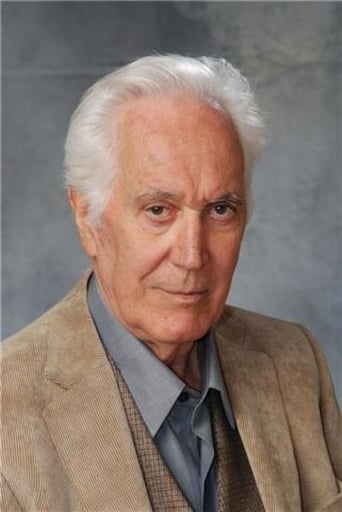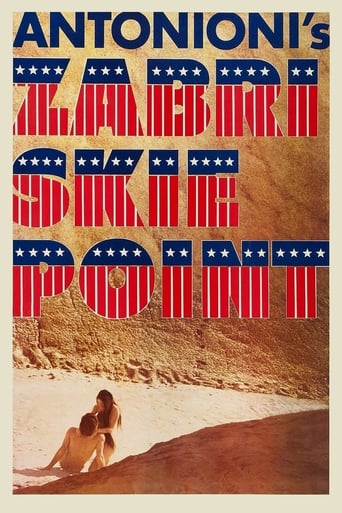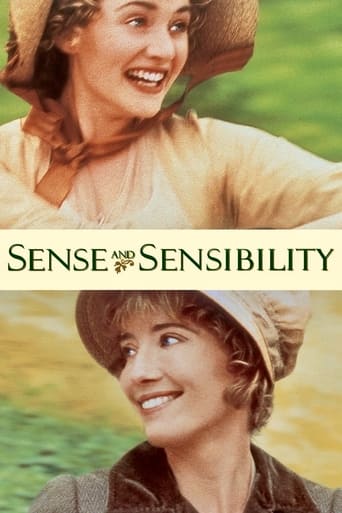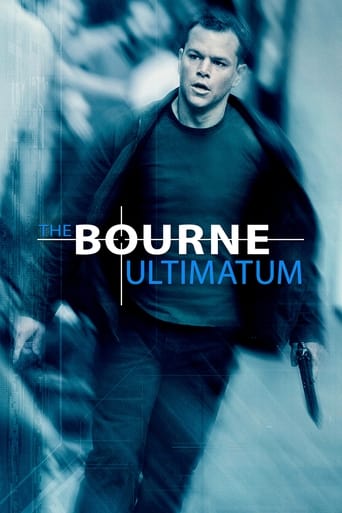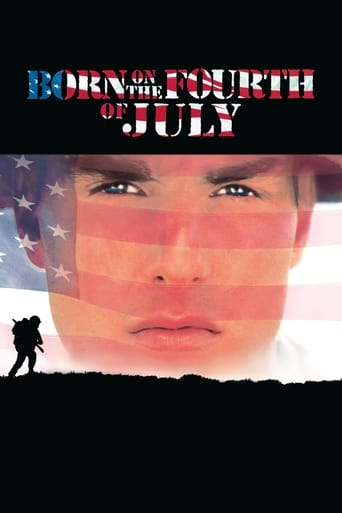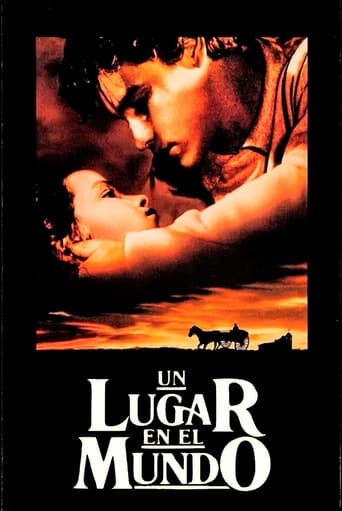
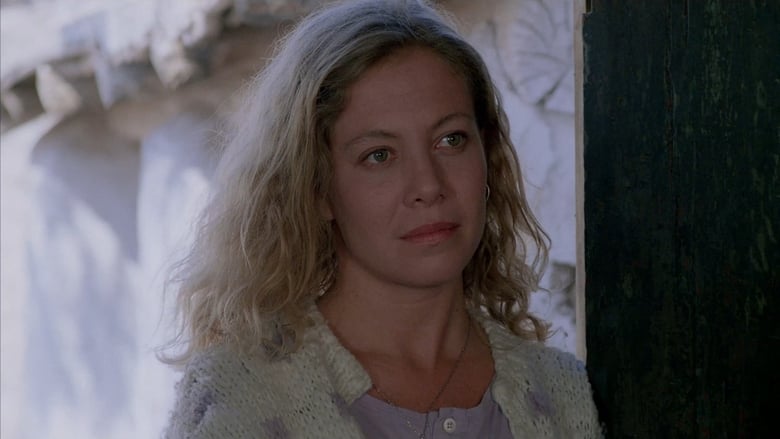
A Place in the World (1992)
Mario and Ana, in voluntary exile from Buenos Aires, live in a remote Argentine valley with their 12-year-old son Ernesto. Mario runs a school and a wool cooperative; Ana, a doctor, heads a clinic with Nelda, a progressive nun. Into this idealistic family comes Hans, a jaded Spanish geological engineer -- surveying the land for the local patron, to see if it can be dammed for hydro-electric power, which would drive the peasants from the land into the cities.
Watch Trailer
Cast
Similar titles



Reviews
Although it has its amusing moments, in eneral the plot does not convince.
At first rather annoying in its heavy emphasis on reenactments, this movie ultimately proves fascinating, simply because the complicated, highly dramatic tale it tells still almost defies belief.
A terrific literary drama and character piece that shows how the process of creating art can be seen differently by those doing it and those looking at it from the outside.
It’s fine. It's literally the definition of a fine movie. You’ve seen it before, you know every beat and outcome before the characters even do. Only question is how much escapism you’re looking for.
It is not so often that one comes across a film whose every frame, every scene is magnificent. As it speaks about ordinary people with extraordinary will power to change things, Argentinian director Adolfo Aristarain's "A place in the world" can be considered a masterpiece as it is a film made with utmost honesty. The theme of good versus bad is handled by a luminary of talented actors namely Federico Luppi, Cecilia Roth and Jose Sacristan. They play roles of strong characters who have the ability to remain apolitical while harboring implicit political ideologies. Apart from some shots of urban locations, the entire film has been shot in a small but picturesque location. The notion of honesty is disappearing fast in modern times but this film shows its usefulness by showing how a young boy returns an important sum of money received as tip merely for not having earned it. The greatest reason why one should watch this film is that Adolfo Aristarain illustrates how a man's place in the world would be made only when men stop exploiting other men for their selfish motives.
Up until the 1980s, films from Argentina were heavily censored by their rightist government and films critical of the system were unheard of in this country. However, when this government fell, many films critical of this old system began to proliferate and the most famous of these internationally was "The Official Story"--which won the Oscar for Best Foreign Language Film. "A Place in the World" debuted a few years later but was not submitted by the Argentines for this award--and so the filmmakers tried submitting it was a Uruguayan film! Later, the film was disqualified, since it WAS from Argentina and was about the country--a very odd footnote, as it's only one of two films every removed from consideration after submitted to the Academy.When you watch "A Place in the World", you might not see that the message is political--and it's not nearly as obvious as in "The Official Story". Instead of being directly critical of the federal government, the film is a socialist commentary about the abuse of the landlords and the need for the common men to work together to receive equality. In this case, a jerk rich guy is intent on buying up all the farmers' wool at HIS price...or else. However, when a German geologist arrives in town, the local agitator (the school teacher) is encouraged to fight back for what is right. At the same time, the story of a sympathetic nun is a metaphor for the traditional relationship between the church and state in the land. The story is told as a flashback from the teacher's teenage son's point of view and unfolds slowly and beautifully. The acting is nice but the direction is the star to me. Well worth seeing.
Interesting, thoughtful mix of two genres – a coming of age film that's sweet, nice, (if occasionally a touch sappy), and a deeply moving, complex political morality play about the price one pays for trying to live by one's ideals. Two leftists, almost killed by the Argentine generals, raise their son in the backwoods, trying to help organize the people there against the local land baron. Into their lives comes a charismatic, sympathetic, but cynical geologist, unhappily working for the land owner, but unable to buy into his new friends' idealism, leading to all sorts of emotional and plot complexities.I'd like to re-see this, and I could imagine rating it even higher, but the over the top score, and few more clichéd elements stopped me from really flipping out for it, while still finding it a solid, strong, thought-proving film.
I think, and most Latin American critics agree, that A PLACE IN THE WORLD runs neck and neck with the Oscar winning OFFICIAL STORY as Argentina's greatest movie ever. This movie shows the maturity that Argentine cinema began to reach after the mid 80's Oscar winner, mentioned above. The wounds left in Argentina by the events depicted in THE OFFICIAL STORY are still there. They are in fact a central theme of this film, which shows vivid signs of these scars beginning to heal. The film also brings Cecilia Roth back from exile (in real life as well as in the film), and cements her partnership with Federico Luppi as the 90's equivalent of Norma Aleandro and Hector Alterio, who were the couple of the 70's and 80's. In fact, Roth and Luppi and this film's director went on to collaborate on another landmark Argentine film of the 90's (MARTIN HACHE), and Roth and Luppi have continued to appear on the screen together since. This film may be their greatest collaboration, but their acting is not the only reason to see this film. Life in the interior of Argentina's provinces was never so well portrayed and explored. And challenges that Argentina and indeed, all Latin American countries face are well addressed. A must see.
